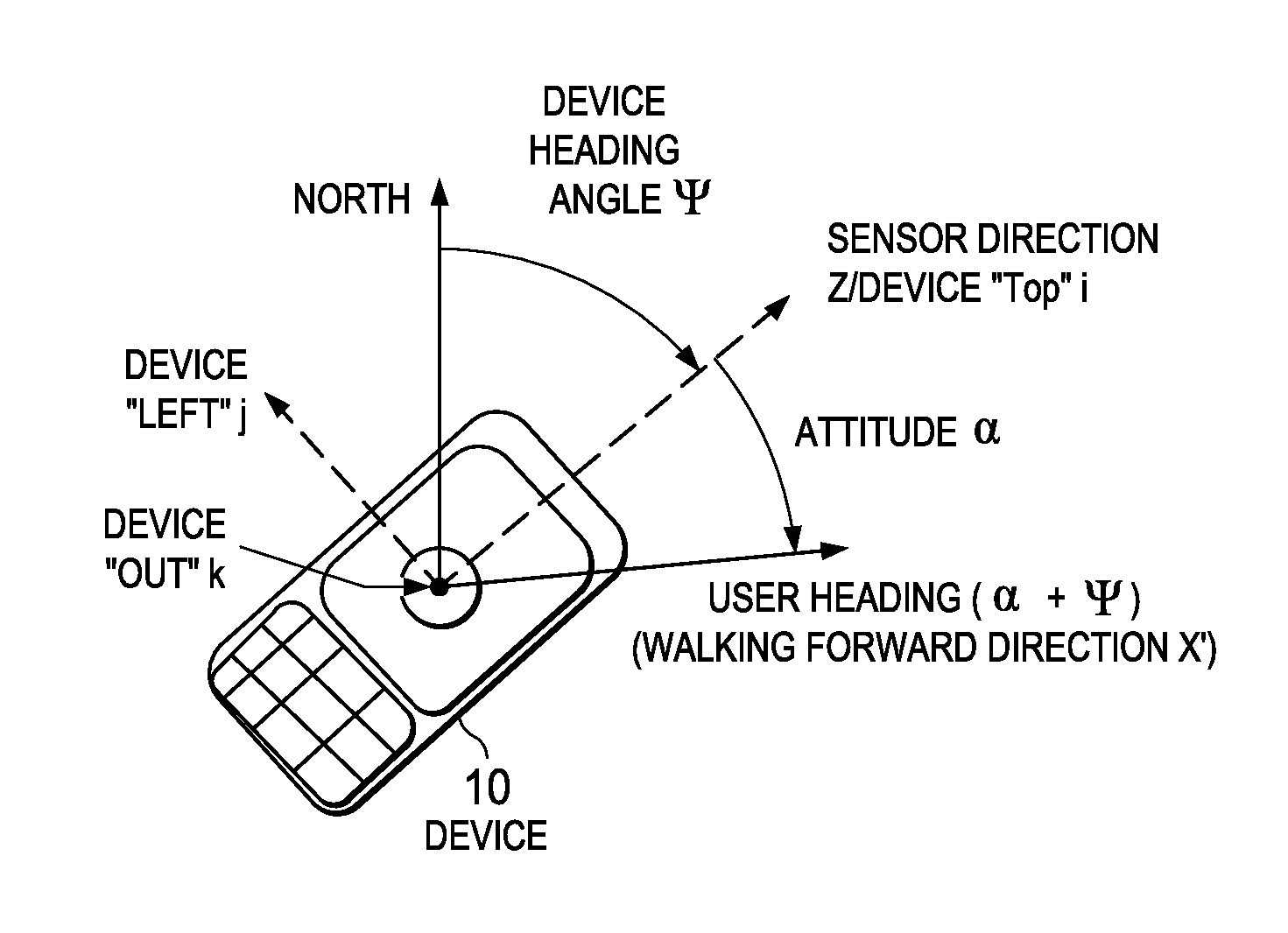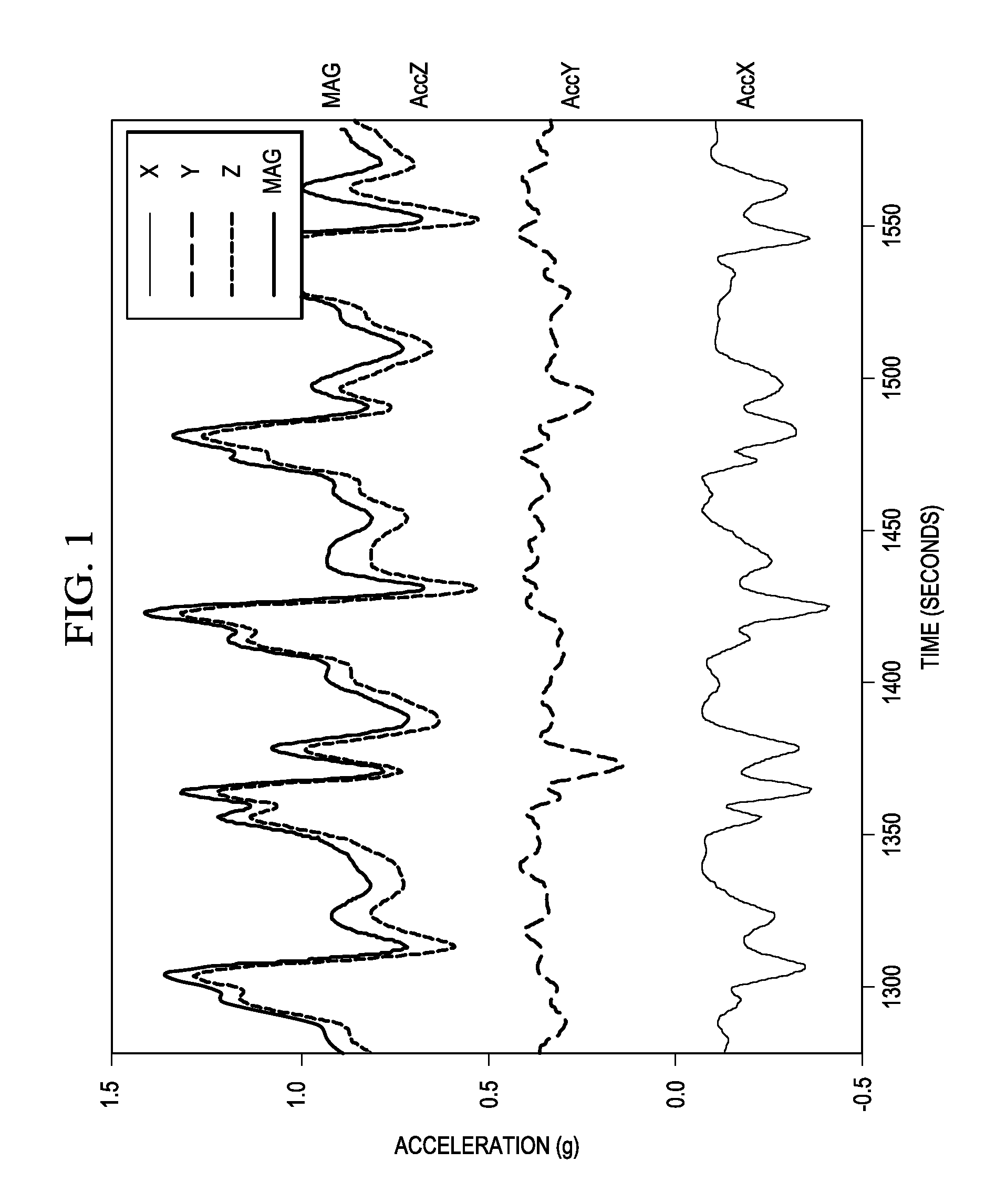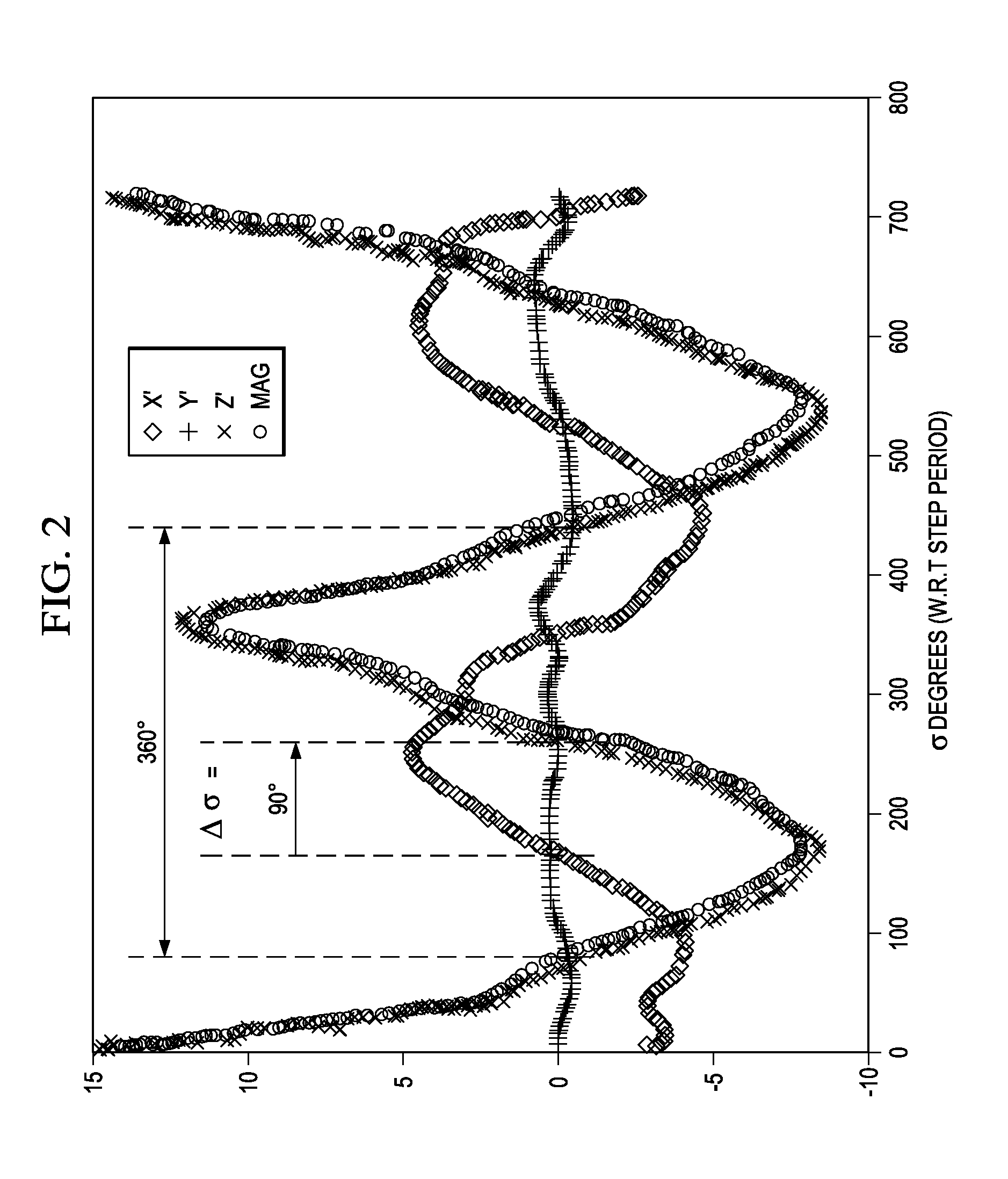Robust step detection using low cost MEMS accelerometer in mobile applications, and processing methods, apparatus and systems
a low-cost, accelerometer technology, applied in distance measurement, navigation instruments, instruments, etc., can solve the problems of large error growth or accumulation, double integration approach likely would need expensive high-precision accelerometers, and inability to adapt to the classical inertial navigation system (ins) based solutions
- Summary
- Abstract
- Description
- Claims
- Application Information
AI Technical Summary
Benefits of technology
Problems solved by technology
Method used
Image
Examples
embodiment 100
[0080]In FIG. 5, mobile device 10 has a three axis accelerometer 110 that provides three raw measurement outputs AccX, AccY, AccZ as a stream of analog-to-digital conversion ADC samples to a pedestrian navigation embodiment 100 in mobile device 10. The pedestrian navigation unit 100 includes accelerometer 110 and ADC, Tilt Estimation 120, De-Tilt 130, Yaw (Attitude) Estimation 140, Up / Down 150, 0 / 180 Resolution 160, Step / Period Detector 170, Step / Stride Counter 175, and Mapping / Position 180.
[0081]Tilt Estimation 120 responds to AccX, AccY, AccZ to produce Pitch φ and Roll θ outputs to De-Tilt 130 using the empirical rules discussed for FIG. 2. Remarkably, tilt can usually be estimated during rest—by averaging the samples during rest to filter the noise. But during walk, the measurements are likely too noisy to average for tilt estimation. However, since the waveforms are in general periodic across a stride—Tilt Estimation 120 in some embodiments conveniently averages across a stride...
embodiment 1600
[0226]FIG. 25 shows an implementation of a wired system embodiment 1600 for a motion monitoring, respiration monitoring, and cardiac monitoring system. An accelerometer 1610 is affixed to the chest of the person being monitored and / or used as taught herein in a manner adequate for acquisition of data currently of interest. An axis sensor signal is coupled to a data acquisition signal processing unit 1620 having a stream data interface and an associated data storage unit 1630 for the signal stream and for instructions and parameters. The signal processing unit 1620 wirelessly supplies process monitoring data to one or more display units 1650.i, each having a respective data storage unit 1660.i. A first form of display 1650.1 shows the heart sound signal and / or heart rate. A second form of display 1650.2 shows the body motion signal, gait waveforms and parameters, pedestrian navigation waveforms and parameters, course plots on maps or visuals, zone confinement or zone-crossing events,...
PUM
 Login to View More
Login to View More Abstract
Description
Claims
Application Information
 Login to View More
Login to View More - R&D
- Intellectual Property
- Life Sciences
- Materials
- Tech Scout
- Unparalleled Data Quality
- Higher Quality Content
- 60% Fewer Hallucinations
Browse by: Latest US Patents, China's latest patents, Technical Efficacy Thesaurus, Application Domain, Technology Topic, Popular Technical Reports.
© 2025 PatSnap. All rights reserved.Legal|Privacy policy|Modern Slavery Act Transparency Statement|Sitemap|About US| Contact US: help@patsnap.com



